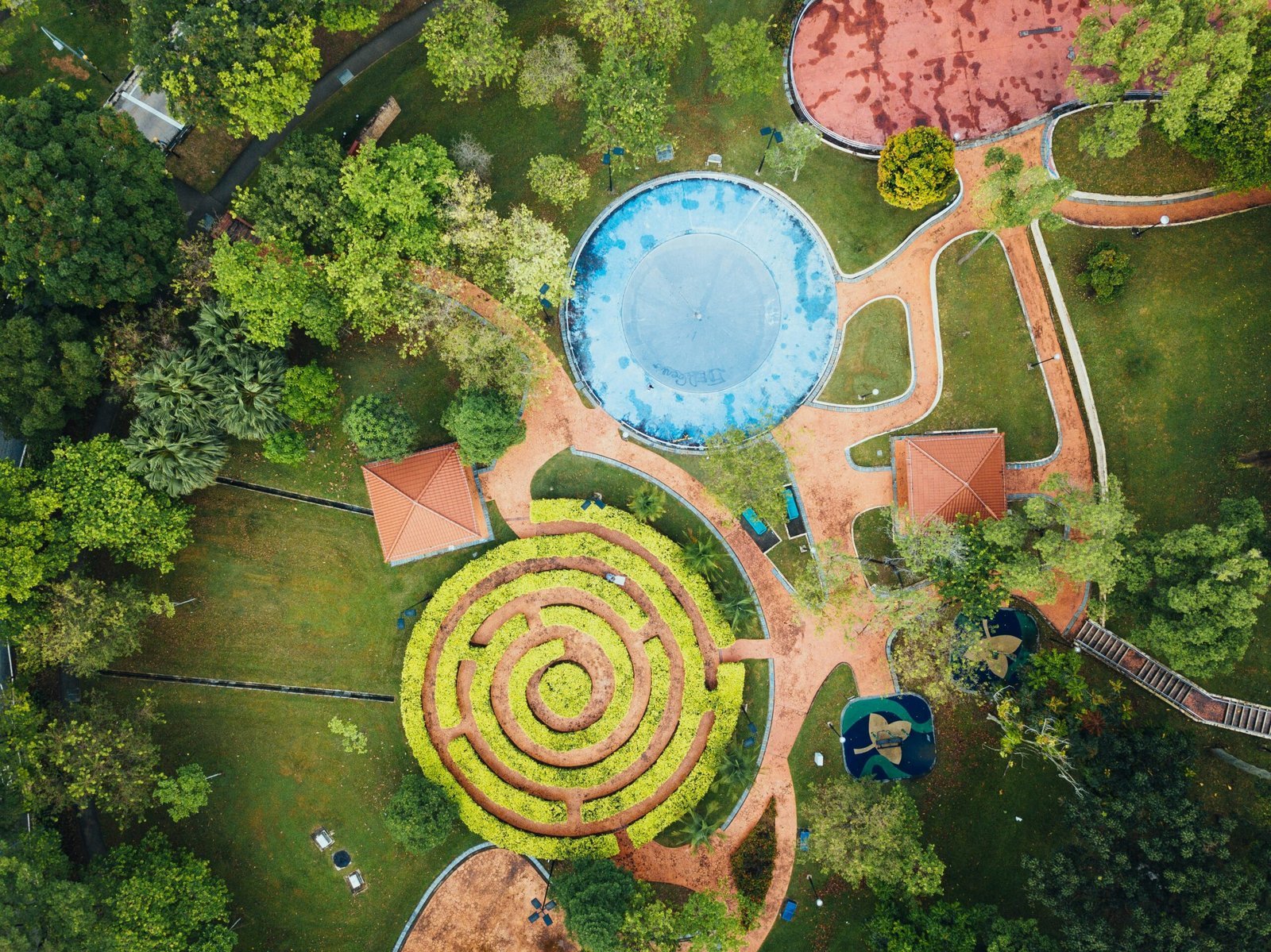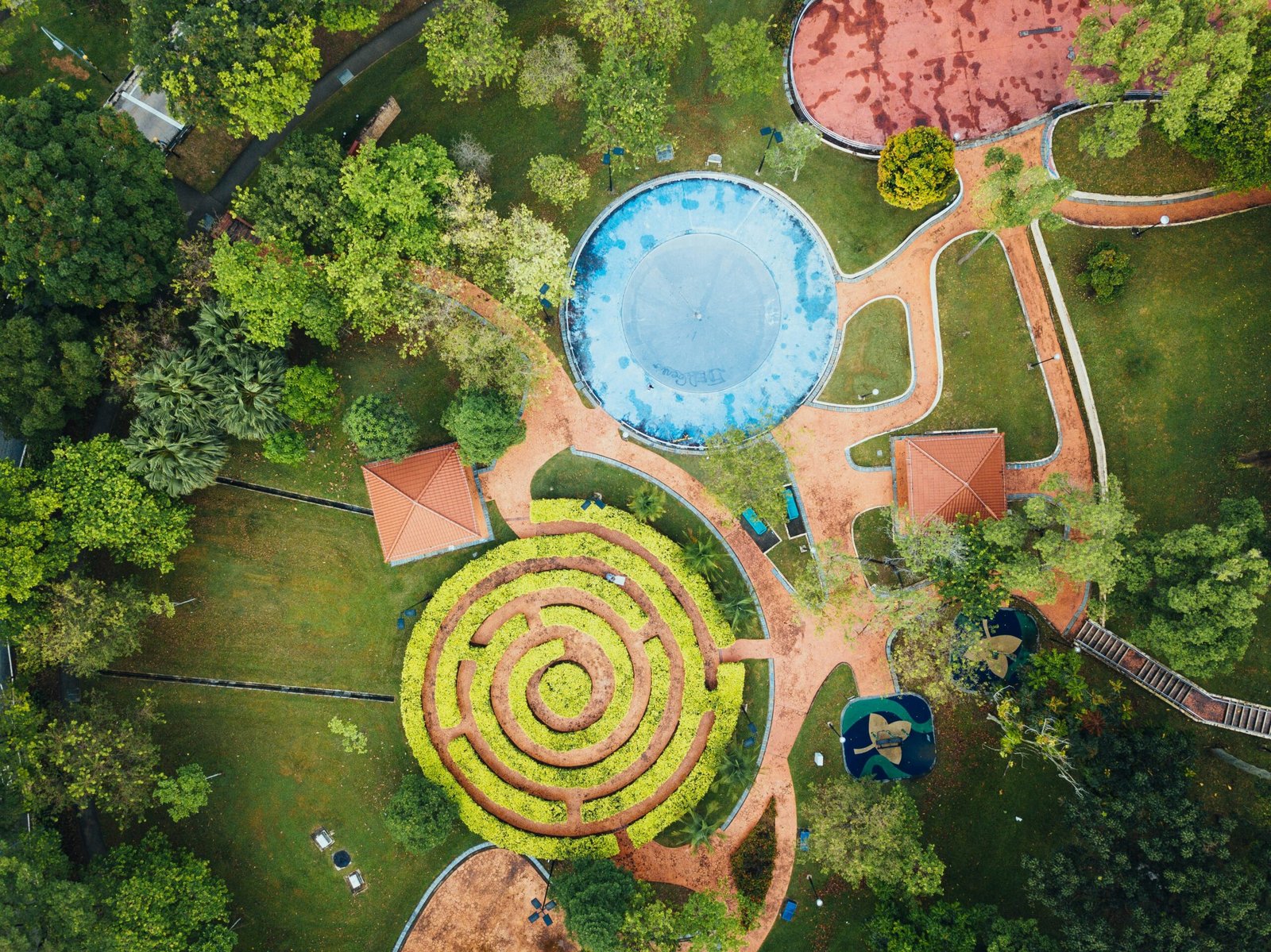Introduction to Mazes: A Global Fascination
Serpant Mazes and labyrinths have captivated human imagination for centuries, transcending cultural and geographical boundaries to become a universal symbol of complexity and challenge. These intricate puzzles have found their place in various forms, from ancient stone constructions to modern digital games, each type offering a unique experience and a different kind of mental exercise. Picture mazes, for instance, are designed with images that guide or mislead the solver, adding layers of interpretation and visual complexity. Logic mazes, on the other hand, require deductive reasoning to navigate the pathways correctly, often leading to moments of profound realization or clarity.
The Temple with the Stone-Carved Maze: An Overview
The Veerabhadreshwara Temple in Keladi, Karnataka, is a striking example of India’s rich cultural and architectural heritage. This temple is particularly renowned for its intricate stone-carved maze, known locally as the Nagamandala, located within the ceilings of the Navaranga Mantapa. Constructed during the 16th century by the Nayaka chiefs, the temple stands as a testament to the architectural brilliance and artistic dexterity of the period.

Historically, the Veerabhadreshwara Temple holds a significant place in the annals of Karnataka’s spiritual landscape. The Nayakas of Keladi, under the visionary leadership of rulers such as Hiriya Venkatappa Nayaka and Keladi Chennamma, patronized the construction and embellishment of this temple. The temple’s location in Keladi, which was once the seat of the Nayaka dynasty, further underscores its spiritual and historical significance.
Functioning as a center of Shaivite worship, the temple is dedicated to Veerabhadra, a fierce form of Lord Shiva. The temple’s architecture reflects the Dravidian style, characterized by towering gopurams and detailed carvings that adorn its walls and pillars. The serpentine maze on the ceilings of the Navaranga Mantapa is a masterpiece of this era, symbolizing intricate cosmic patterns and divine protectiveness.
The Veerabhadreshwara Temple is also deeply intertwined with the cultural practices and local folklore of Karnataka. The Nagamandala, which adorns the temple’s nave, encompasses mythological and symbolic representation through its serpentine maze. This serpent maze is not only an architectural wonder but also a ceremonial epicenter, often symbolizing protection, fertility, and prosperity in Indian culture.
In essence, the Veerabhadreshwara Temple is a cultural treasure that offers insight into the artistic excellence and spiritual fervor of ancient India. Its stone-carved maze is a silent witness to the temple’s historical and cultural journey, captivating anyone who gazes upon its elaborate design and craftsmanship.
Craftsmanship Behind the Stone-Carved Maze
The creation of ancient stone-carved mazes, such as the serpant maze at the Veerabhadreshwara Temple in Keladi, Karnataka, stands as a testament to the extraordinary craftsmanship of India’s historical artisans. This intricate design showcases a masterful blend of skill and innovation, all achieved without the use of joints or nails. The artisans relied heavily on a deep understanding of stone as a medium, carefully selecting materials that were both durable and workable.
In achieving the maze’s complexity, the ancient craftsmen employed a variety of tools and techniques. Chisels of differing shapes and sizes enabled them to carve precise lines and intricate patterns. Hammers, wedges, and other stoneworking implements were used to split and shape the massive blocks of stone. Importantly, these artisans applied advanced principles of geometry and physics to ensure each piece fit seamlessly with the others, creating the visual and structural cohesion seen in the ceilings of the navaranga mantapa and other temple features. The absence of joints and nails speaks to the unparalleled precision with which these elements were created and assembled.
Techniques such as stone dressing, where the rough surface of the stone was meticulously smoothed, and fine carving added detailed textures and symbolic motifs. This painstaking process required not only physical stamina but also a high degree of mental acuity and artistic sensibility. The artisans’ ability to breathe life and narrative into cold stone is particularly evident in various nagamandala designs, which often feature in these temple mazes as protective and auspicious symbols.
To think that such feats were accomplished using rudimentary tools only adds to our admiration for these artisans. Their knowledge was often passed down through generations, preserving methods that cultivated an enduring architectural heritage. The serpant maze, along with the broader stonework of temples like Veerabhadreshwara, gives us a glimpse into the sophisticated and highly skilled world of ancient Indian craft.
Architectural Significance and Symbolism
The architectural significance and symbolism of ancient Indian temples, such as the Veerabhadreshwara Temple in Keladi, Karnataka, extend far beyond their physical grandeur. One of the most fascinating elements found therein is the serpant maze, intricately carved into stone. This serpant maze is not just a showcase of artistic mastery but is deeply embedded with symbolic meanings and spiritual connotations. Within the Indian religious context, the serpant often symbolizes fertility, protection, and the cyclic nature of life.
The ceilings of the navaranga mantapa, the central hall in many traditional temples, often depict this serpentine design. These carvings are more than mere decorations; they serve as visual narratives that convey complex theological and cosmological ideas. The serpant maze could represent the eternal cycle of birth and rebirth, a core concept in Hindu philosophy. This continuous loop signifies the soul’s journey through various incarnations, reinforcing the idea of karma and moksha (liberation).

Additionally, the serpant maze holds a significant place in Indian mythology. It is closely associated with the concept of Nagamandala, a ritualistic performance dedicated to appeasing the serpent gods. This inclusion serves to evoke divine protection and blessings for the devotees. In temples like the Veerabhadreshwara, these symbolic elements further enhance the spiritual atmosphere, channeling the sacred energy within the space.
Moreover, the placement of these mazes on the ceilings of the navaranga mantapa is deliberately chosen to encourage devotees to look upward, thereby directing their thoughts toward the heavens and the divine. The symbolism extends beyond mere visual stimuli; it functions as a guided meditative aid, leading worshippers through a contemplative journey. In this architectural choreography, the serpant maze fosters a profound connection between the earthly and the divine, the tangible and the metaphysical.
Comparison with Other Indian Mazes
The architectural brilliance of India’s ancient temples often extends to intricate stone-carved mazes, each presenting unique features and artistic elements. The stone maze of the Veerabhadreshwara Temple in Keladi, Karnataka, stands out when compared to other mazes found in Indian temples and monuments across the country. While the serpentine maze within the ceilings of the Navaranga Mantapa displays intricate craftsmanship, there are several other temple complexes where mazes form an integral part of the overall design.
One notable comparison is with the famous labyrinthine passages of the Jagannath Temple in Puri, Odisha. Here, the maze-like layout facilitates a controlled flow of pilgrims, an essential feature during the massive Rath Yatra festival. Similarly, the caves of Ajanta and Ellora in Maharashtra, although primarily noted for their rock-cut architecture and frescoes, also include intricate passages and paths that guide visitors through their historical narratives.
Another prominent site is the Bhul-Bhulaiya of the Bara Imambara in Lucknow, Uttar Pradesh. This maze, a marvel of 18th-century architecture, is designed to confuse invaders, capitalizing on the psychological elements of disorientation. In contrast, the maze in the Veerabhadreshwara Temple does not aim for confusion but rather serves as a symbolic journey and an artistic marvel. Similarly, the Nagamandala rituals in various parts of Karnataka often employ symbolic mazes to depict endless cycles of time and the universe, coinciding with Hindu cosmology.
The stone-carved maze of the Veerabhadreshwara Temple in Keladi is particularly distinguished by its integration into the ceilings of the Navaranga Mantapa. This architectural choice not only showcases the artistry involved but also enhances the sacred atmosphere, invoking divine reverence. This feature sets it apart from many other mazes which predominantly occupy ground spaces. The ceiling’s serpentine pathway intertwines spiritual symbolism with aesthetic beauty, making it a unique cultural heritage site.
Visitor Experience and Perspectives
Visiting the veerabhadreshwara temple in keladi, Karnataka, is an awe-inspiring journey into India’s rich cultural heritage. As you step into the compound, the meticulous stone architecture and historical ambiance envelop you, promising a unique adventure. One of the temple’s most intriguing features is the serpant maze, a stone-carved marvel that significantly enhances the visitor’s experience.
Many visitors report feeling a deep sense of reverence and curiosity as they navigate the serpant maze. The sprawling design, with its intricate pathways, demands thoughtful observation and provides a palpable connection to the temple’s ancient past. “Walking through the serpant maze was like tracing the footsteps of centuries gone by,” remarks one visitor, whose sense of fascination mirrors the sentiments of many.
A glimpse at the ceilings of the navaranga mantapa reveals elaborate depictions of mythical stories, heightening the mystique and historic relevance of this sacred ground. The ceilings, much like the serpant maze, are a testament to the artisan’s skill and the temple’s spiritual significance. One can’t help but marvel at the attention to detail, contributing to an immersive experience that transcends ordinary sightseeing.
The native ritual of nagamandala, often performed in the temple precincts, adds another layer to the overall experience. The ceremonial offerings and chants resonate through the temple halls, immersing visitors in a living tradition that complements the serpant maze’s silent storytelling. “Experiencing a nagamandala ritual here was profoundly moving,” shares another visitor. “The entire temple felt alive, and the serpant maze seemed to pulse with the same vibrant energy.”
In essence, the maze is more than just an architectural feature; it serves as a symbolic journey for many who visit, embodying both the complexity and tranquility of the temple’s essence. Each step taken in the maze reverberates with historical and spiritual significance, ensuring that the experience remains etched in memory long after the visit concludes.
Preservation and Cultural Legacy
The preservation of the Veerabhadreshwara Temple in Keladi, Karnataka, including the intricate serpant maze within its ceilings of the Navaranga Mantapa, has been a significant priority for both governmental and non-governmental organizations. The Archaeological Survey of India (ASI) has implemented various conservation techniques, ensuring the structural stability of the temple and the safeguarding of its exquisite carvings from the ravages of time and environmental factors.
One notable restoration project has focused extensively on cleaning and meticulously repairing the stone surfaces to remove moss and grime, which can obscure and damage the carvings over time. This has involved employing methods such as chemical treatments and careful manual cleaning to preserve the original artistry while halting further degradation. The restoration team has also put in place measures to manage water runoff and control vegetation growth around the temple complex, addressing one of the critical threats to the integrity of stone structures in humid tropical climates.
Local non-governmental organizations have played a crucial role in raising awareness about the temple’s historical and cultural significance. Through educational programs and community engagement, these organizations are fostering a sense of ownership and pride among the local population. Workshops and guided tours, often conducted in collaboration with schools and cultural associations, aim to educate both locals and tourists about the temple’s rich heritage, including details about the serpant maze and its symbolic significance in Hindu cosmology.
Governmental initiatives, such as the provision of grants and the designation of the temple as a protected monument, have also been instrumental in its preservation. These initiatives ensure that adequate resources are allocated not only for physical restoration but also for scholarly research, which helps document and interpret the temple’s unique features for future generations.
The enduring legacy of the Veerabhadreshwara Temple and its elaborate stone maze continues to be a source of inspiration within contemporary Indian culture. It stands as a testament to the ingenuity and artistic excellence of ancient Indian craftsmen. Through dedicated preservation efforts, the temple and its navaranga mantapa remain vivid symbols of India’s rich architectural heritage, resonating with both historical importance and cultural pride.



